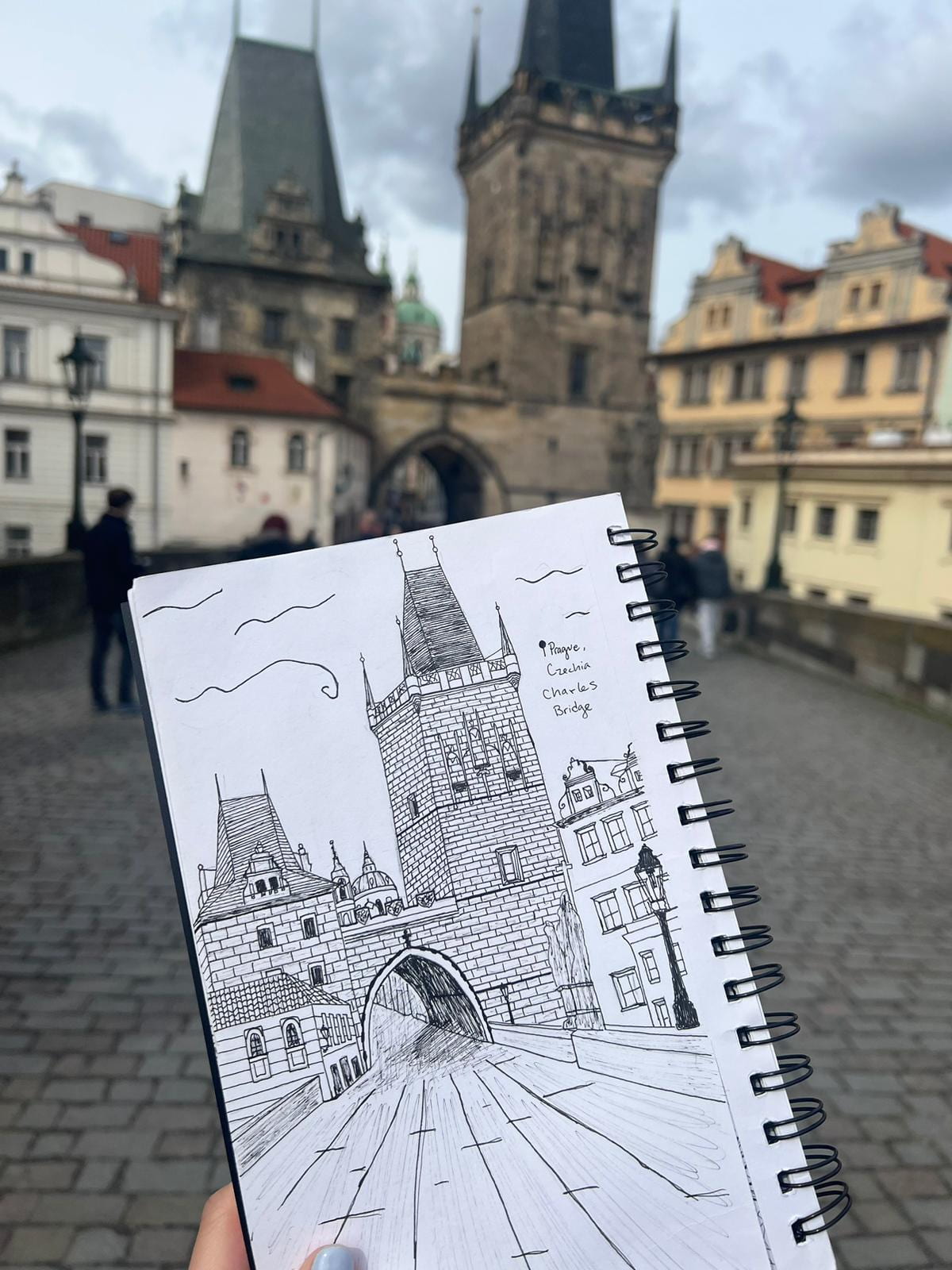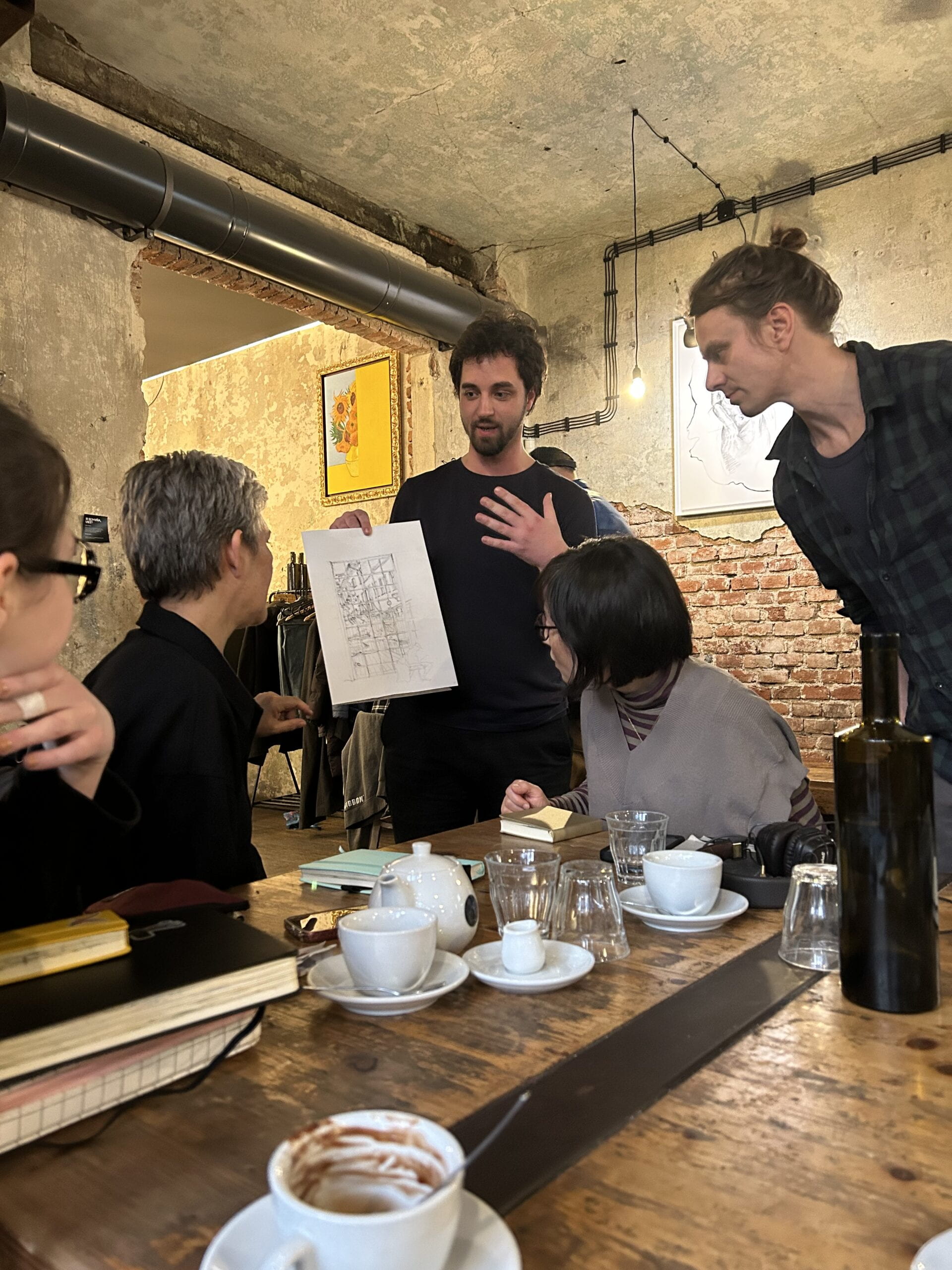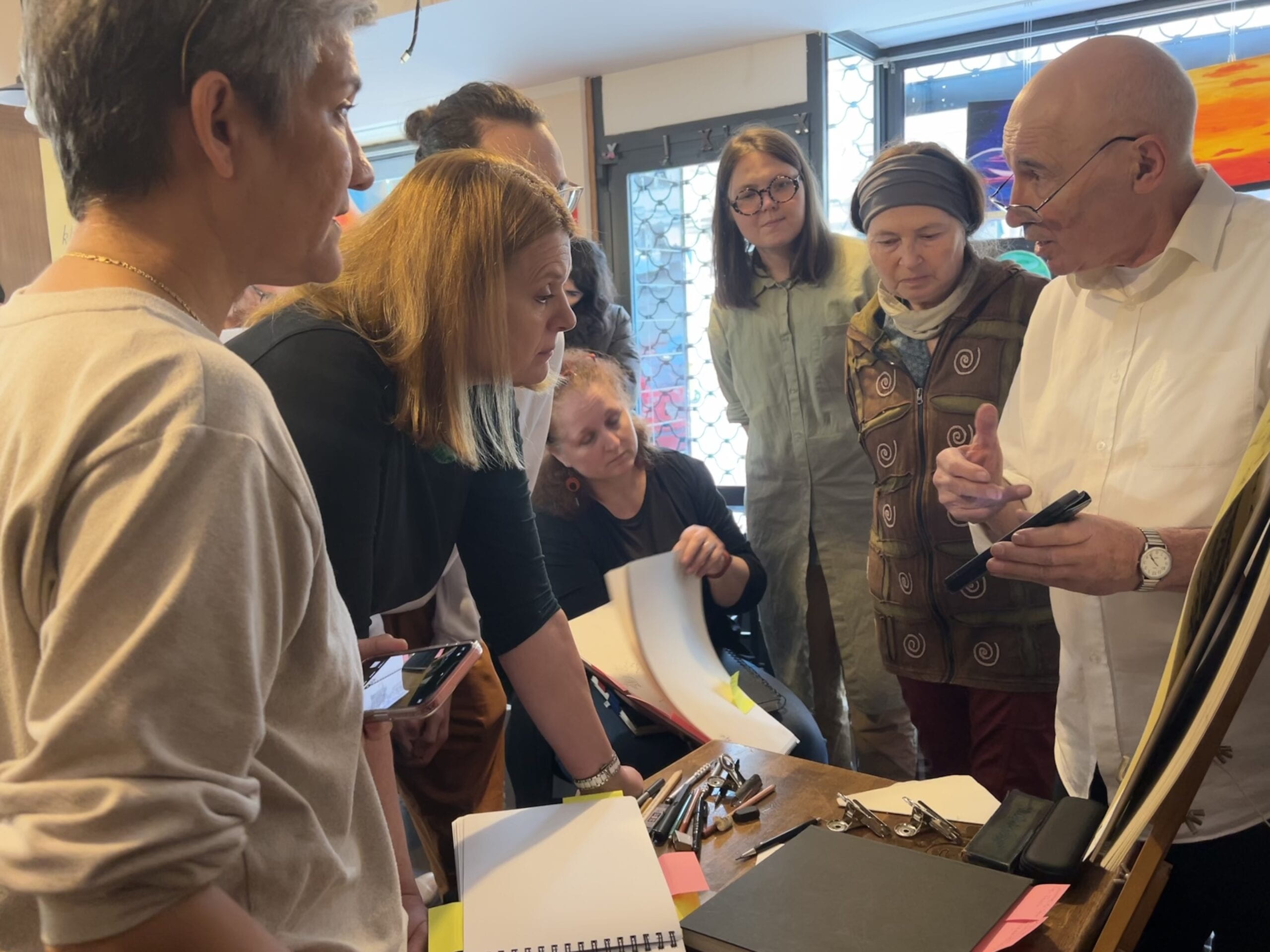As the crowds of tourists stream through the entrance of Prague’s Charles Bridge, Sam Ngai stands still. Ngai, 19, bundled up against the early March chill, clutches a worn, spiral-bound sketchbook and pencil. She tilts her face up at the Old Town Bridge Tower, finding a perfect angle for a well-composed drawing. Her slightly frozen fingers grip the pencil loosely as she translates the scene with graphite strokes.
Inspired by social media and her friends, Ngai, an NYU sophomore, started sketching in her everyday surroundings, practicing what is dubbed “urban sketching” in January at the start of her semester abroad.

The art and practice of on-location drawing—urban sketching—focuses on street scenes and architecture. The pastime has been growing steadily across the globe, promoted by several groups, including Urban Sketchers, an organization with chapters in 394 cities across the world and 120,000 members. Instagram carries more than one million posts with the hashtag #urbansketching.
The lure of urban sketching includes its instant availability, calming effects and supportive community. Ngai, a sophomore majoring in urban design and architecture, finds sketching provides relief from the stress of schoolwork and hectic routine.
“I will just be sitting there drawing, and I don’t really know what time it is,” she says. “And for me, that’s kind of a big deal. So when I get to do things that I don’t know what time it is, and doesn’t matter, it feels really good.”
Whether it’s being oblivious to the stream of people on the Charles Bridge or spending time perfecting her sketch of the Colosseum in Rome, Ngai is forcing her brain to take a pause, explains Marygrace Berberian, clinical assistant professor of art therapy at New York University. “It speaks to creating more gratitude for the here and now, where they are in that space,” Berberian says.
Urban sketching can foster relaxation, especially when life seems chaotic and overwhelming. “You are able to focus on the present moment in a more mindful way,” she says. Berberian describes the mindset connected with sketching as taking control of even a small slice of your environment.
Even using a pencil—which can be erased—contributes to the art form’s stress-relieving effects. “You’re not being pressured to have it become perfect,” Berberian says. The improvisational, freeform aspects of sketching contribute to its popularity. And all that’s needed is a pencil and a piece of paper.
This lack of pressure and low barrier is what encouraged Chantal Bazire, 58, to join up with Urban Sketchers Prague in 2022. A year later, in the lively cafe Kavárna co hledá jméno, Bazire sips on tea as she sits among the group members. She has her sketchbook out on her lap as she gazes out the window, where rain falls on the cold spring day.
Bazire, a recent French transplant, discovered Urban Sketchers Prague when looking for a new hobby post-COVID quarantine. Initially, she was daunted.
“It is quite frightening, because most are quite good,” says Bazire, recounting with a laugh that she considered heading off to the bathroom to avoid showing her work to the group at the end of sessions. Though despite her fear, she has found comfort with the group.
After the sketching session at Kavárna co hledá jméno, the group gathers at one end of the long table to share their sketches. With a smile, Bazire holds out her depiction of the trees and statues outside the window. She receives compliments on her choice of color and line work from the other sketchers, who all lean closer to get a better look.
Berberian, the art therapist, believes that positive feedback on something you have personally created is incredibly validating. The community aspect is also important. “I think urban sketching is a much more involved and authentic way to get people together.”

Lenka Kýrová is a physical therapist and the organizer of Urban Sketchers Prague. She describes how even beginners can feel a sense of safety.
“On your own, you feel like everybody is watching you, and sometimes people come and look over your shoulder. But when you’re in a group, then you feel kind of protected,” Kýrová says. She was able to build confidence in her artwork through spending time with the group and has noticed the same transformation with many other people.
Over the past couple of years, Kýrová has filled several sketchbooks, and one is always tucked into her backpack. This is what she pulls out while traveling instead of a camera. “When you take a photograph, you actually don’t focus much and you go away,” Kýrová says. With sketching, though, she spends more time in one place and finds she remembers it better.
Whether it is the mundane scene of a tree next to the tram stop she is waiting at or the beautiful architecture she sees in another country, Kýrová captures the memories with her pen and paper. She is transported back to these places when she goes through her sketchbook, she says. “I am exactly at that moment.”



BAZIRE Chantal
Very nice article 😊👍